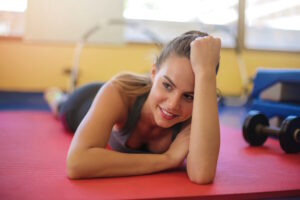
Embarking on a journey with Pilates to enhance your flexibility is an exciting and rewarding endeavor. As a seasoned expert in guiding beginners through the world of Pilates for flexibility, I’m here to provide you with practical tips that will help you get started on the right foot. From building a foundation of flexibility to dispelling common misconceptions, let’s dive into the essential advice that will empower you to begin your Pilates journey with confidence.
How can I get more flexible for Pilates?
1. Consistency is Key: Just as with any fitness endeavor, consistency is crucial. Make Pilates a regular part of your routine to see steady improvements in flexibility over time.
2. Start Slow: Begin with gentle stretches and basic Pilates exercises that focus on alignment and controlled movement. Gradually progress to more challenging exercises as your flexibility improves.
3. Dynamic Warm-Up: Incorporate a dynamic warm-up routine before your Pilates practice to increase blood flow to your muscles and prepare them for stretching.
4. Mindful Breathing: Breathing deeply and mindfully during your Pilates practice helps relax your muscles and allows for deeper stretches.
5. Listen to Your Body: Pay attention to your body’s signals. Push yourself to a comfortable limit, avoiding pain or strain. Over time, your flexibility will naturally improve.
Do you need to be flexible to start Pilates?
No, you do not need to be flexible to start Pilates. In fact, Pilates is an excellent practice for improving flexibility regardless of your starting point. The controlled movements and dynamic stretches in Pilates are designed to work with your current range of motion. As you progress, you’ll notice gradual improvements in your flexibility, but you don’t need to be exceptionally flexible to begin. Pilates will meet you where you are and help you progress at a pace that suits your body.
Can you get flexible from Pilates?
Absolutely! Pilates is renowned for its ability to enhance flexibility. The combination of controlled movements, muscle engagement, and dynamic stretches promotes both strength and suppleness. Pilates targets specific muscle groups and encourages them to lengthen while maintaining alignment and stability. Over time, consistent Pilates practice can lead to improved range of motion, increased flexibility, and reduced muscle tension.
How long does it take to become more flexible with Pilates?
The timeline for increasing flexibility with Pilates varies from person to person and depends on factors such as your starting point, frequency of practice, and individual body composition. It’s important to approach your Pilates practice with patience and realistic expectations.
Some individuals may start to notice improvements in flexibility within a few weeks of consistent practice, while others may take a few months. It’s crucial to remember that flexibility gains are gradual and cumulative. Celebrate small victories along the way, such as being able to stretch a bit farther or hold a pose with greater ease. Your dedication to regular practice will ultimately determine the speed and extent of your flexibility gains.
Summing it Up
Starting your Pilates journey with the goal of enhancing flexibility is a commendable step toward improved well-being. By following these practical tips, you can set a strong foundation for your practice and make steady progress in your flexibility goals. Remember that flexibility is a journey, not a destination, and every step you take toward greater suppleness is a victory. Whether you’re a beginner or an experienced practitioner, Pilates has the power to transform your body’s mobility and bring about a more flexible and agile you.